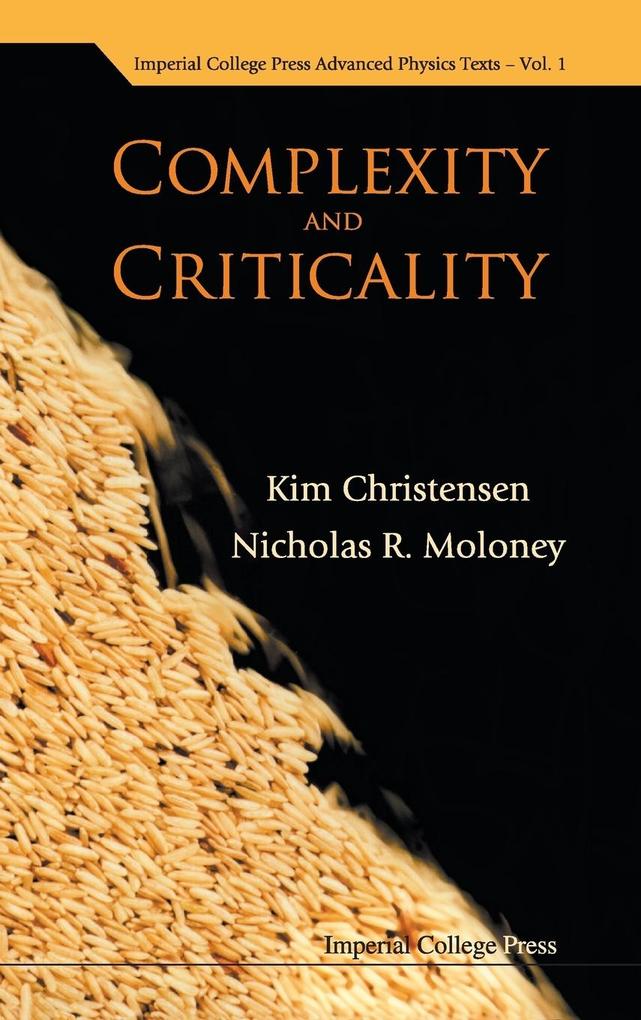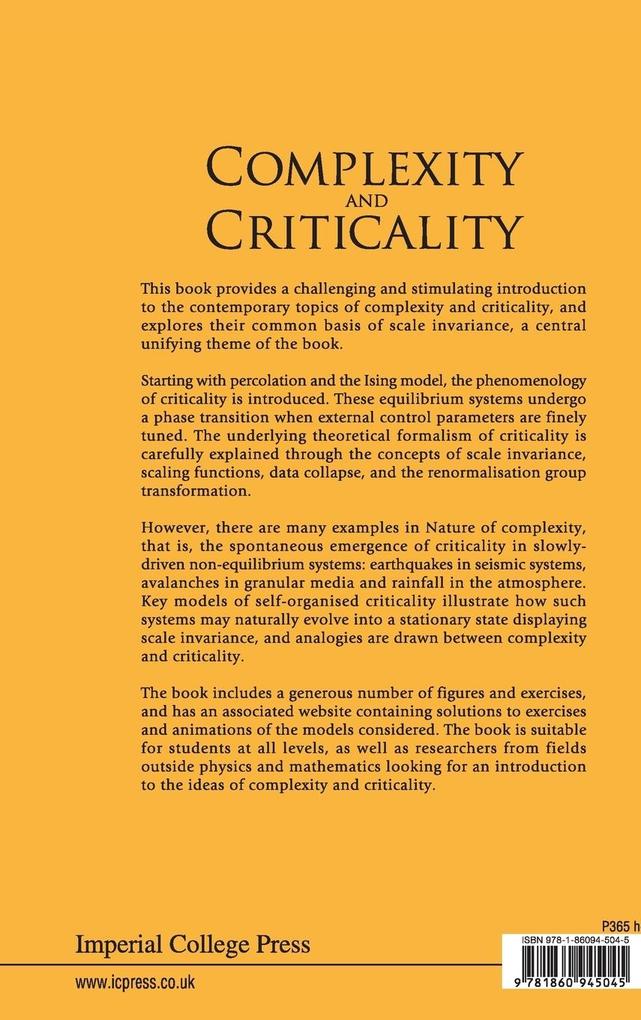
Zustellung: Mi, 16.07. - Sa, 19.07.
Versand in 7 Tagen
VersandkostenfreiThis book provides a challenging and stimulating introduction to the contemporary topics of complexity and criticality, and explores their common basis of scale invariance, a central unifying theme of the book. Criticality refers to the behaviour of extended systems at a phase transition where scale invariance prevails. The many constituent microscopic parts bringing about macroscopic phenomena that cannot be understood by considering a single part alone. The phenomenology of phase transitions is introduced by considering percolation, a simple model with a purely geometrical phase transition, thus enabling the reader to become intuitively familiar with concepts such as scale invariance and renormalisation. The Ising model is then introduced, which captures a thermodynamic phase transition from a disordered to an ordered system as the temperature is lowered in zero external field. By emphasising analogies between percolation and the Ising model, the reader's intuition of phase transiti
Inhaltsverzeichnis
Percolation: Percolating Phase Transition; In One and Two Dimensions, and in the Bethe Lattice; Geometric Properties of Clusters; Scaling Ansatz, Scaling Functions and Scaling Relations; Universality; Real-Space Renormalisation Group; Ising Model: Review of Thermodynamics and Statistical Mechanics; Symmetry Breaking; Ferromagnetic Phase Transition; In One and Two Dimensions, and in the Mean-Field; Landau Theory of Continuous Phase Transitions; Scaling Ansatz, Scaling Functions and Scaling Relations; Universality; Real-Space Renormalisation Group; Self-Organised Criticality: BTW Model in One and Two Dimensions, and in the Mean-Field; A Rice Pile Experiment and the Oslo Model; Earthquakes and the OFC Model; Rainfall; Self-Organised Criticality as a Unifying Principle.
Produktdetails
Erscheinungsdatum
04. Oktober 2005
Sprache
englisch
Seitenanzahl
410
Autor/Autorin
Kim Christensen & Nicholas R Moloney
Verlag/Hersteller
Produktart
gebunden
Gewicht
742 g
Größe (L/B/H)
235/157/27 mm
ISBN
9781860945045
Entdecken Sie mehr
Pressestimmen
"Personally, I enjoyed reading this book very much. The arguments are clear and draw attention to a number of useful insights ... Students will find the presentation on self-organized criticality fun to read, particularly because it deals with real phenomena, such as earthquakes, rice-pile avalanches and rainfall ... I strongly agree with these authors that undergraduates need to be exposed to issues related to complexity and criticality. Their textbook is the first that I have seen that makes developing such courses feasible."Mathematical Reviews
Bewertungen
0 Bewertungen
Es wurden noch keine Bewertungen abgegeben. Schreiben Sie die erste Bewertung zu "COMPLEXITY & CRITICALITY (V1)" und helfen Sie damit anderen bei der Kaufentscheidung.








